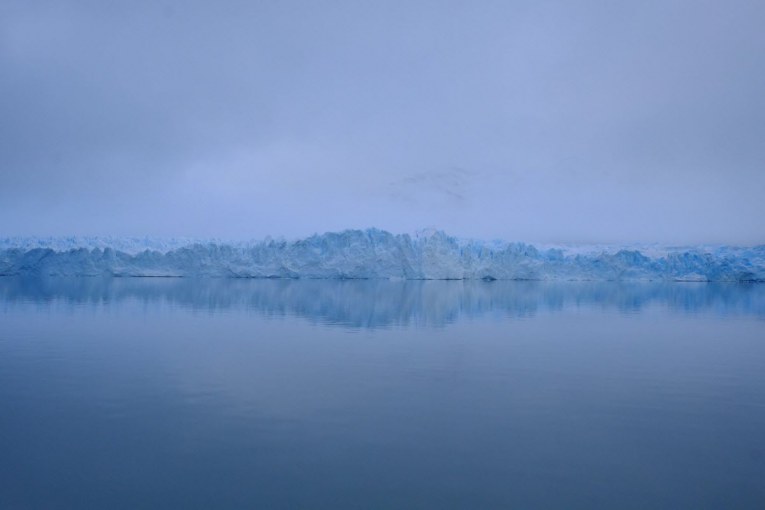
By Debra Chase
Antarctica has 15 major ice shelf areas and, for the past 20 years or so, warming earth temperatures have pushed two major sections of the Larsen ice shelf in Antarctica to collapse into the ocean. A third shelf, as large as the states of New Hampshire and Vermont combined, has thinned so much that it will also face collapse. This year a crack in the Larsen-C section of the shelf has widened during the annual snowmelt. The “crack” is just over 1100 feet wide and 80 miles long, an astonishing growth spurt over 2015 numbers, revealing that a portion of the shelf that could break off is as large as the state of Delaware.
An ice shelf is a thick slab of ice that extends out over the ocean whilst remaining attached to the coastline. It is an extension of the ice sheet that is grounded, pushed seaward. Forming a natural border of the Antarctic continent, ice shelves periodically release or “calve” icebergs. Some icebergs are smallish, the size of a small U.S. state or European country, and most are fed by inland glaciers. Exposed to warming air above and warming ocean below, ice shelves and their cousin, ice tongues, will be affected more readily by temperature rise than, say, ice sheets or glaciers would. Ice shelves and glaciers have a close relationship – the glaciers feed the shelves and the shelves protect the glaciers from melting by preventing the water from penetrating them. Together they form a stable and balanced system. Warming ocean waters have destabilized the system and, like a bad marriage, when the relationship can no longer be maintained, it breaks up.
The Larsen ice shelves sit at the tip of the Antarctic Peninsula, the northernmost part of the mainland. In 1995 Larsen A disintegrated, followed by the disintegration of Larsen B in 2002. Today Larsen C, the largest section, and its sister, Larsen D, are all that are left of this shelf. Warmer global ocean temperatures increase the speed of the glaciers, destabilizing this protective system dramatically by disintegration of the shelf itself. (Disintegration is a newly recognized phenomenon associated with climate change). Without the shelf there to slow the speed of melting of the glacier, the glacier accelerates. When glaciers accelerate up to eight times their normal speed, as they did when the Larsen-B ice shelf disintegrated, other glaciers nearby also accelerate.
Ice shelves are the bulwark of the glaciers against the oceans currents; their importance in preserving the glaciers is well known, and without them the glacial ice enters the ocean faster, causing sea level rise. The disintegration and eventually the complete fall of the shelf by itself is not going to raise sea levels – as that chunk of ice is already afloat – but it will speed up the flow of glacial ice that it is holding back, which in turn will definitely raise global sea levels. Human caused warming of the atmosphere and the oceans has been speeding up and, in June of this year, the National Oceanic and Atmospheric Administration, (NOAA), revealed that, for the first time in four million years, carbon dioxide levels at the South Pole have passed the symbolic “red line” of four hundred parts per million.
All indications show that the Larsen-C is thinning. In years past scientists weren’t sure whether the Larsen-C ice sheet was melting from the top down or the bottom up. A study completed in May 2015 and published in the journal Cryosphere confirms that it is actually both-an attack from above and below. This glacial melt will cause destruction of arctic habitat and eventually, if it continues unabated, will create more disturbing weather events across the globe.

http://www.nasa.gov/feature/goddard/nasa-study-mass-gains-of-antarctic-ice-sheet-greater-than-losses
Frankly–great point; I had not seen this article before (will try to find time to read it later tonite). Snowfall and snowfall accumulation over polar regions has always been notoriously difficult to measure accurately; guess they must be getting a better handle on it. If global warming continues and there are some shifts in southern ocean (particularly antarctic circumpolar) ocean circulation patterns, this could conceivably cause shifts in precipitation over the antarctic (which is a polar desert in terms of precipitation); small to moderate shifts upward in snowfall and snowfall accumulation in the antarctic continent would remove water from the oceans at a net rate higher then the rate of addition of water from recently increased net melting rate of glaciers all over the world.